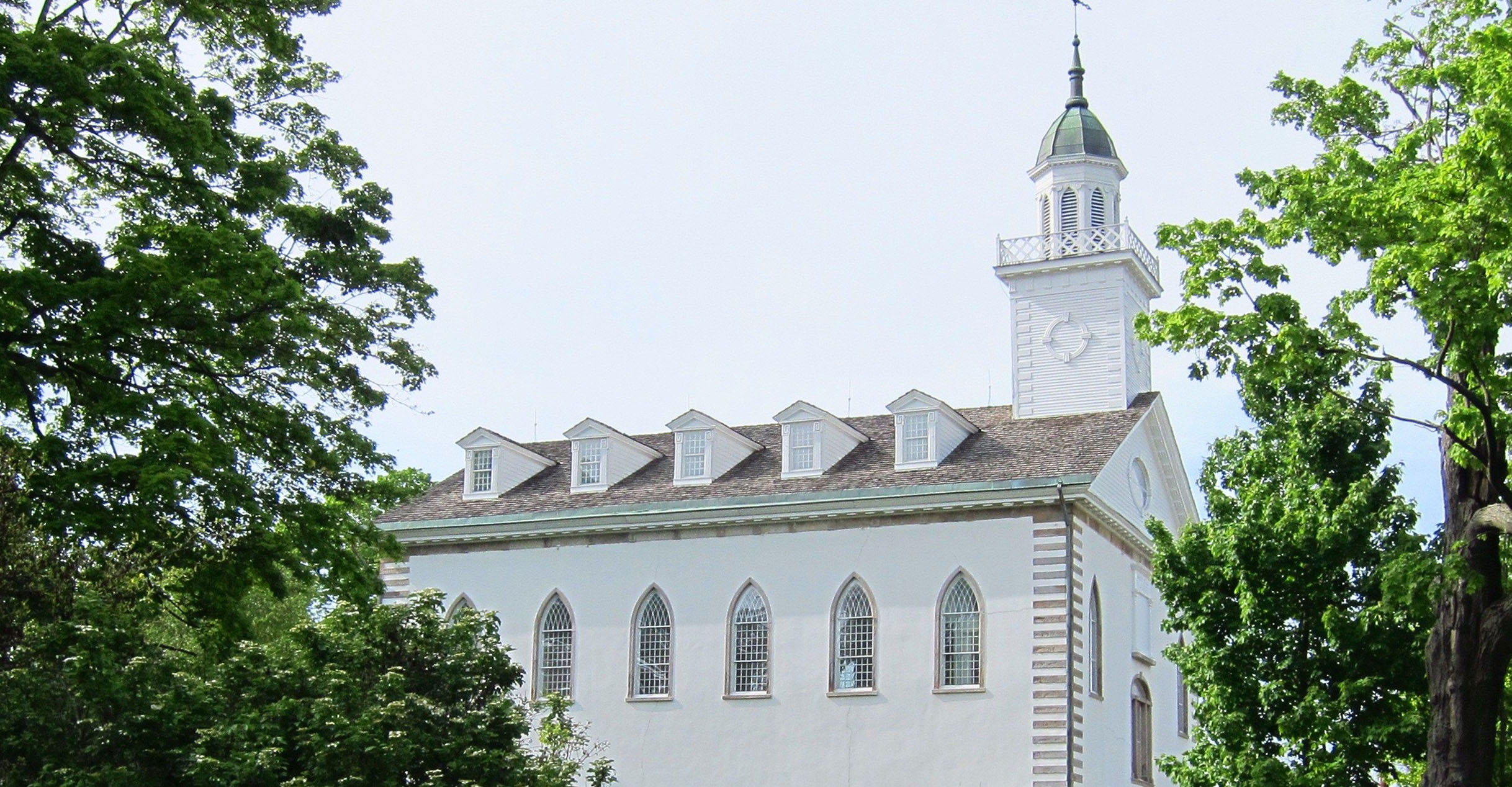Sometimes we have to give up our good plans for God’s better ones.
I remember standing in a little room above the Newel K. Whitney Store in Ohio, looking out the window at the beautiful temple up the hill. My missionary companion and I were sharing a story with a family about God’s commandment to the Latter-day Saints in Kirtland to build a temple (see Doctrine and Covenants 88:119). The early Saints were humble and poor—and frankly, they knew nothing about building temples. The Saints did, however, know a lot about building log houses. So naturally, when they were asked to propose ideas for the temple blueprint, they suggested that it be—you guessed it—a log house.

PHOTO BY SAMUEL KAMBU
In the chapter of Revelations in Context titled “A House for Our God,” Lisa Olsen Tait and Brent Rogers record Joseph Smith’s response to the proposed plan. He said “that they were not making a house for themselves or any other man but a house for God. And shall we, brethren, build a house for Our God of logs? No, brethren, I have a better plan than that. I have the plan of the house of the Lord given by himself.”
The Lord’s plan for the Kirtland Temple was much grander than the Saints’ plan; it was more expensive, more time-consuming, and more complex in every way.
However, was following God’s plan worth it to them?
One week after the temple was dedicated, Jesus Christ said, “Let the hearts of all my people rejoice, who have, with their might, built this house to my name. For behold, I have accepted this house, and my name shall be here; and I will manifest myself to my people in mercy in this house” (Doctrine and Covenants 110:6–7). These words alone made it all worth it to the Saints.
After I returned from my mission, I had a somewhat similar experience to the one the Saints had. Nearly every major plan I had created for my life fell apart. I spent a lot of time trying to salvage my ambitions while simultaneously avoiding God’s. His plans were much grander than mine; they were more taxing, more uncomfortable, and more stretching in every way.
But did his plans end up being worth it? Yes.
So if you’re wondering what the secret to a successful life is, it’s this: be willing to give up your good plans for God’s better ones.
Learn more about the sacrifices that went into building the Kirtland Temple by reading the Revelations in Context chapter “A House for Our God” by Lisa Olsen Tait and Brent Rogers.
Source: Church History
—Ashlyn Pells, Latter-day Saint Insights
FEATURE IMAGE BY THE MEDIA LIBRARY OF THE CHURCH OF JESUS CHRIST OF LATTER-DAY SAINTS
Find more insights
Find out how you can trust God with your future by reading Kenzie Holbrook’s article “Do You Have Faith in God’s Plan Even If It’s Not Yours?”
Read Ariel Szuch’s blog post “You’re Not Messing Up God’s Plan for You” to discover how you can follow God while still creating your own path.



I’ve been thinking about this topic a lot lately—especially relating to the temple. My parents have always been good examples of setting the temple as a priority in their lives. My father currently works at the temple, and he and my mother go twice a week, doing multiple sessions each time. Although I enjoy going to the temple, a bad patron experience I had at the temple during my mission made me nervous to return. I was happy enough watching my parents go and tell me about the wonderful experiences they had.
However, just last week, I went with them and did two endowment sessions back-to-back. I was nervous and felt like I was sacrificing my sleep and stress to go to a 7 a.m. session almost an hour away from where I live, followed by another one at 9 a.m. But when I got into the temple, I could answer that question “was following God’s plan worth it to me?” with an absolute “Yes.”
And then more I’ve tried to follow God’s commandments since then, the more blessings I’ve felt, even within the past couple of weeks. The temple truly is a place of eternal perspective: although things in our lives may seem tense, nerve-wracking, and troublesome, going to the temple and following God will bring us that peace.